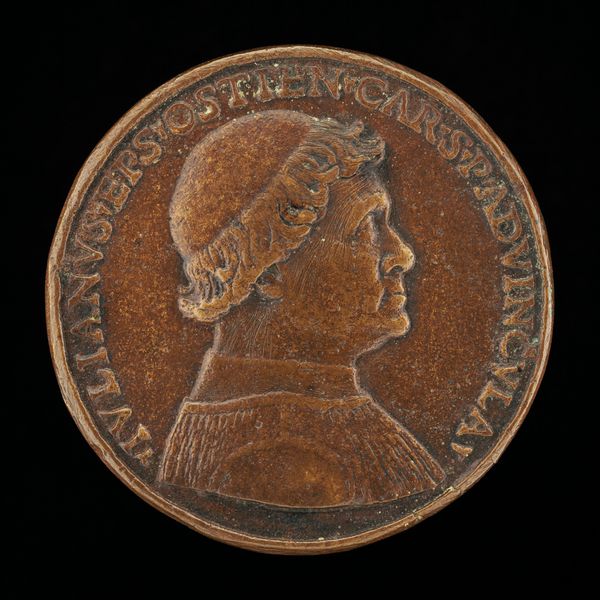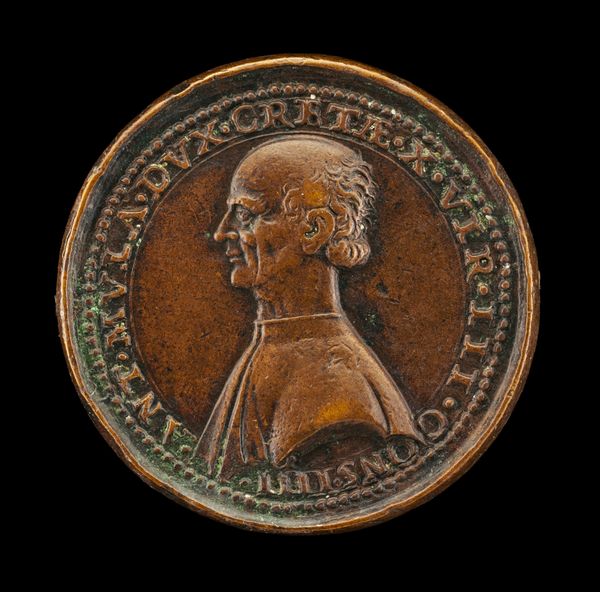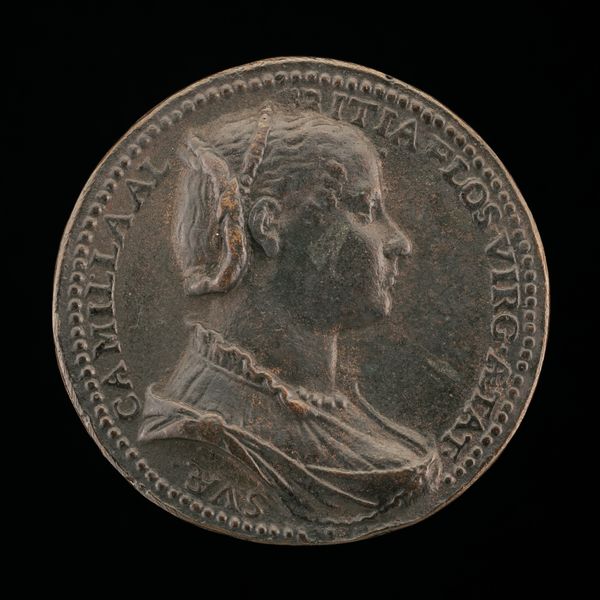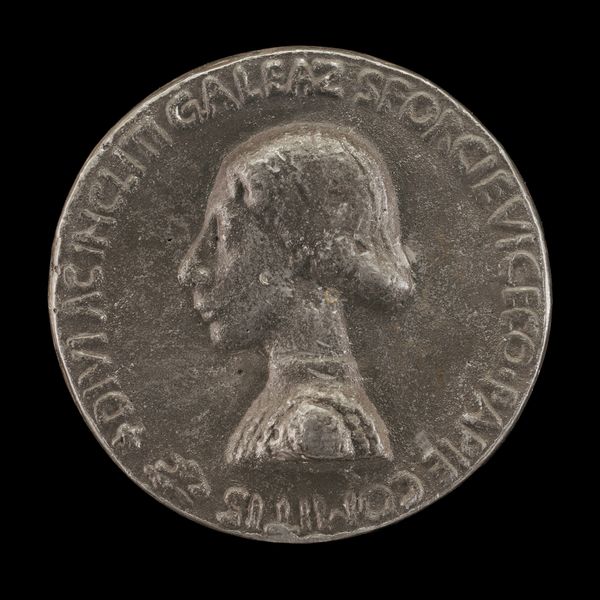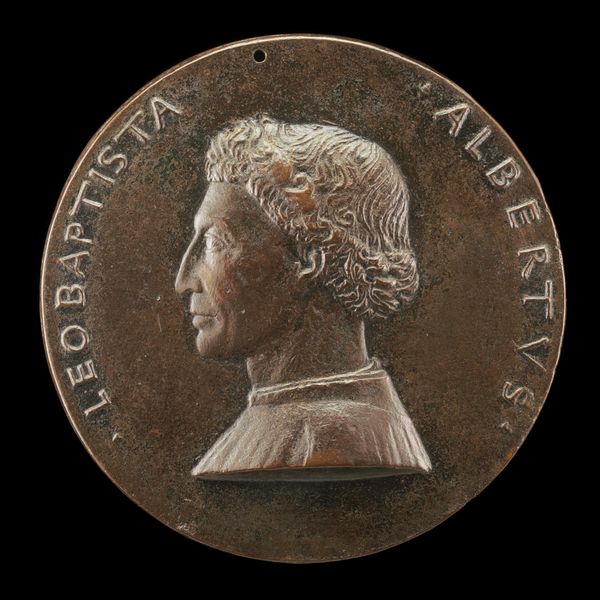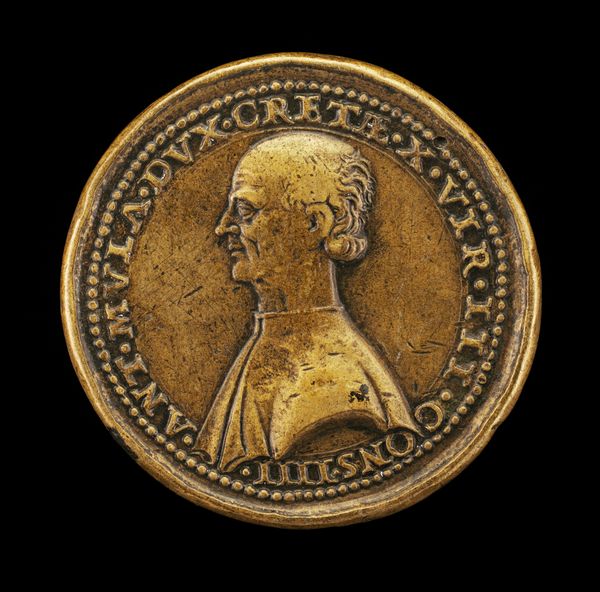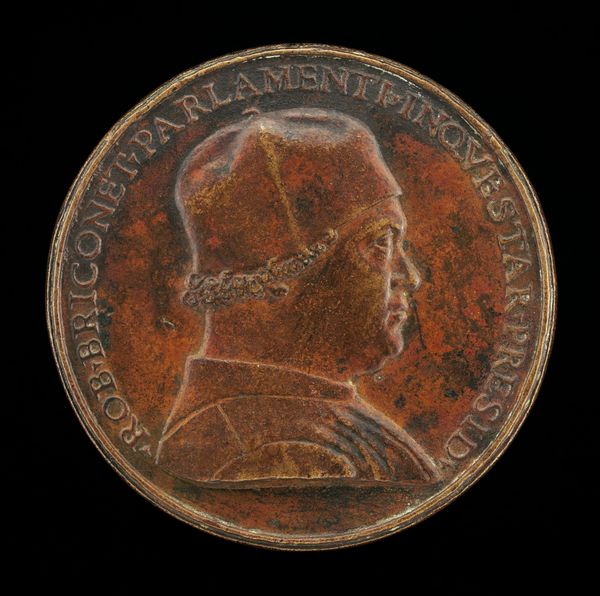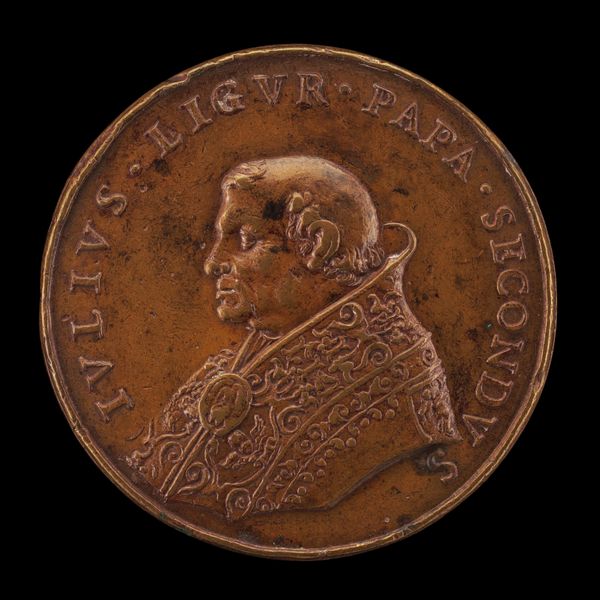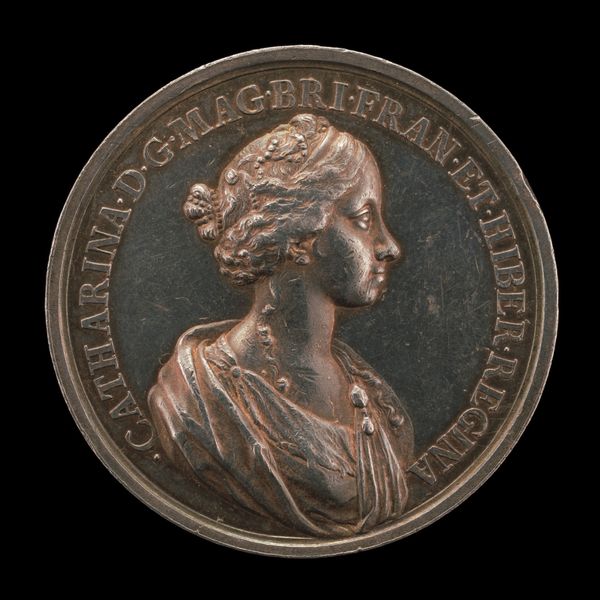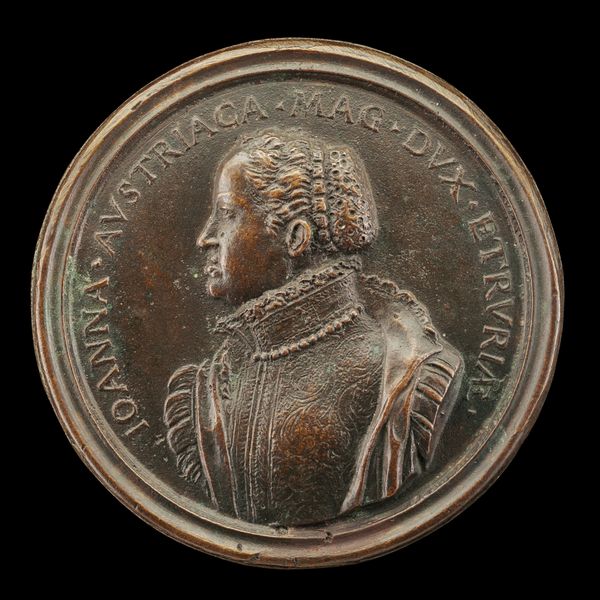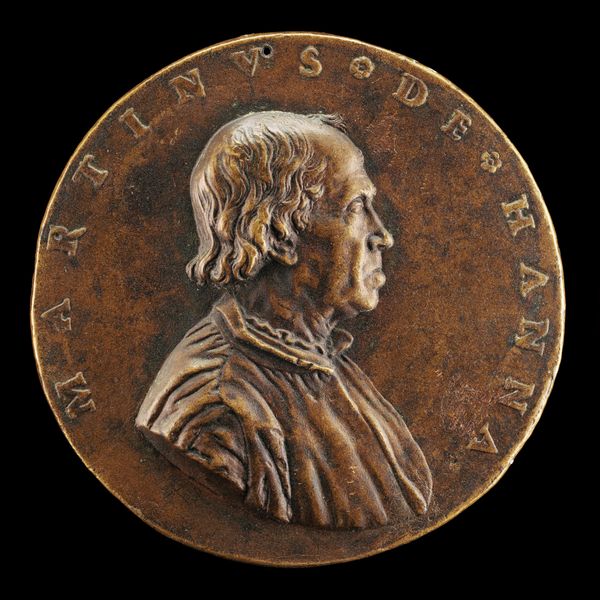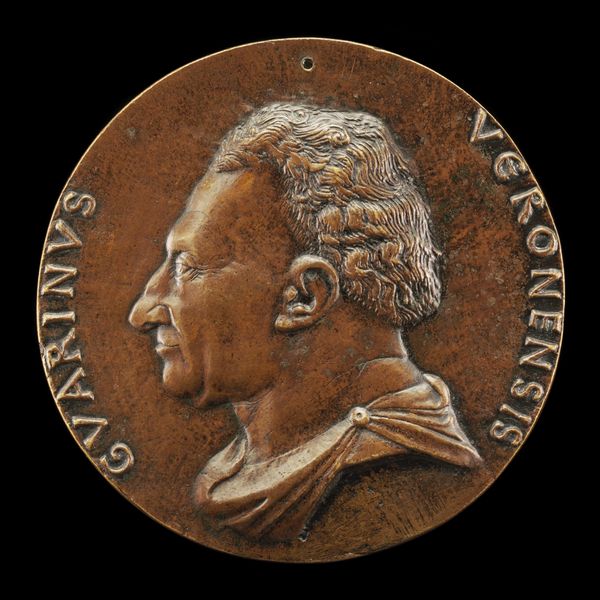![Jean Carondelet, President of the Parliament of Burgundy 1479 [obverse] by Giovanni Candida](/_next/image?url=https%3A%2F%2Fd2w8kbdekdi1gv.cloudfront.net%2FeyJidWNrZXQiOiAiYXJ0ZXJhLWltYWdlcy1idWNrZXQiLCAia2V5IjogImFydHdvcmtzLzAwZTY5ZmFkLTc1ZGEtNDBlZS05Y2JmLWY2MDJiYWFmNDEyYy8wMGU2OWZhZC03NWRhLTQwZWUtOWNiZi1mNjAyYmFhZjQxMmNfZnVsbC5qcGciLCAiZWRpdHMiOiB7InJlc2l6ZSI6IHsid2lkdGgiOiAxOTIwLCAiaGVpZ2h0IjogMTkyMCwgImZpdCI6ICJpbnNpZGUifX19&w=3840&q=75)
Jean Carondelet, President of the Parliament of Burgundy 1479 [obverse] 1479
0:00
0:00
metal, relief, bronze, sculpture
#
portrait
#
medal
#
metal
#
sculpture
#
relief
#
bronze
#
sculpture
#
italian-renaissance
Dimensions: overall (diameter): 4.62 cm (1 13/16 in.) gross weight: 41.24 gr (0.091 lb.) axis: 6:00
Copyright: National Gallery of Art: CC0 1.0
Curator: Here we have a bronze portrait medal dating back to 1479, attributed to Giovanni Candida. It depicts Jean Carondelet, who served as President of the Parliament of Burgundy. Editor: Immediately, I’m drawn to the materiality. The smooth, almost waxy surface of the bronze gives it a tactile quality, despite being behind glass. The details, though subtle, have an earthy, grounded feel. Curator: Medals such as these were important markers of status and power within the socio-political landscape of the Italian Renaissance. They circulated as gifts and mementos, solidifying networks of influence. The production and display of portraits like these communicated Carondelet's importance. Editor: Absolutely. And consider the labor involved: the initial design, the casting process, the careful chasing of the details. Bronze isn't exactly easy to work with; the craft element speaks volumes about Carondelet's commitment to displaying a specific, carefully manufactured image of himself. How was Candida involved and regarded in the broader crafting traditions of the Renaissance? Curator: Candida was well-regarded as a sculptor and medallist associated with various European courts. Medals provided a portable format for self-promotion, quite different from larger, immobile statues. Note the careful rendering of Carondelet's profile and his composed, authoritative gaze. It is carefully composed for maximum impact. Editor: His stoic expression really sells it, doesn't it? And the inscription surrounding the image also subtly reinforces authority, grounding Carondelet's identity and prestige. Thinking materially, did the bronze come from local mines, or would it be sourced from further afield? Were the production tools locally made? These questions about access and making become questions about status too. Curator: Indeed, this portrait signifies more than just a likeness. It’s a complex visual object conveying authority, patronage, and a defined place in the Renaissance world. Editor: It makes you appreciate the artistry but also reflect on how it functions almost as a prototype for future techniques of crafting personas in later media. Curator: A potent symbol embedded within the structures of its time. Editor: Yes, carefully constructed with hand, material and socio-cultural meaning.
Comments
No comments
Be the first to comment and join the conversation on the ultimate creative platform.
